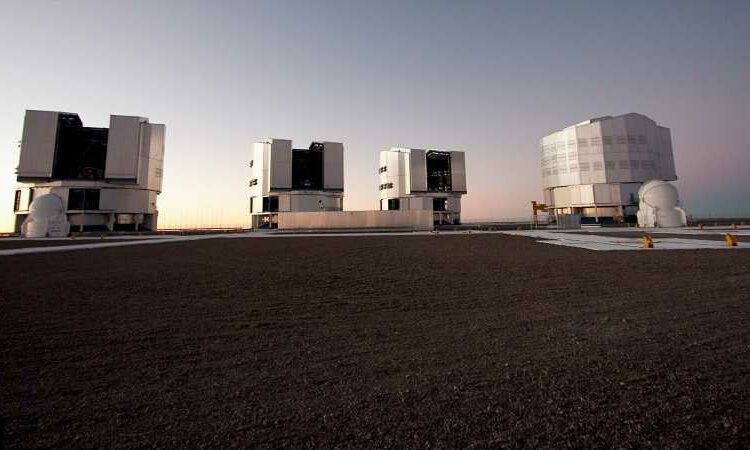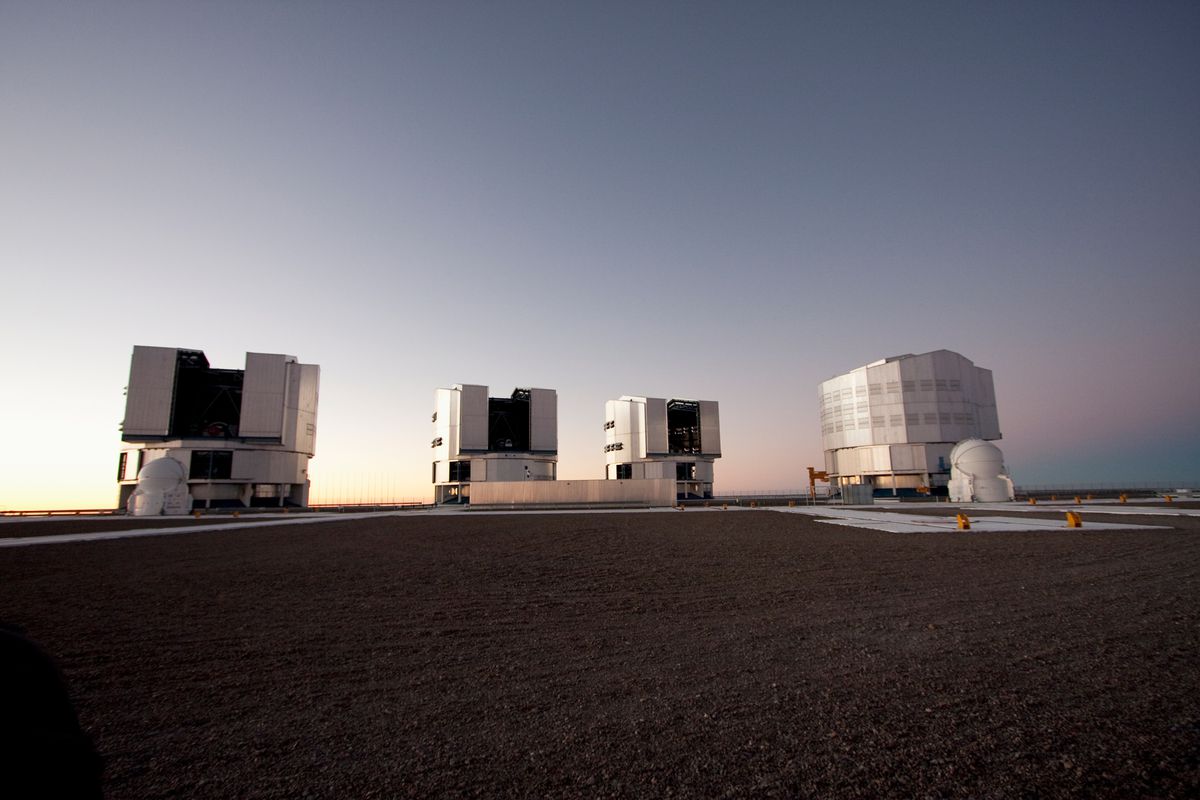The search for life in space just took a big leap forward. Researchers working on the New Earths in the Alpha Centauri Region (NEAR) project, funded by entrepreneur Yuri Milner's Breakthrough Initiatives, have potentially discovered a new planet in the habitable zone of the nearby star Alpha Centauri A, located 4.37 light-years from Earth. Their report was published in the Nature Communications journal this week.
In an image taken of the star via the European Southern Observatory's (ESO) Very Large Telescope (VLT) in Chile, the team spotted a separate glowing object. They suspect it might be a planet — one that's four to five times larger than Earth, or roughly the size of Neptune. It's located between one to two astronomical units (AU) from its star (one AU is the distance from the Earth to the sun), putting the planet in the habitable zone, where water might be able to form to support life.
Particularly intriguing to scientists is that Alpha Centauri A is a binary star with Alpha Centauri B — many theorized that planets wouldn't be able to form in such a binary system. However, the planet is only a planet candidate for now, as the research team needs more data to verify its existence.
"We were amazed to find a signal in our data," the study's coauthor Kevin Wagner said in a statement. "While the detection meets every criteria for what a planet would look like, alternative explanations — such as dust orbiting within the habitable zone or simply an instrumental artifact of unknown origin — have to be ruled out."
If it does turn out to be a planet, it wouldn't be too surprising. In 2016, scientists discovered a potentially habitable planet orbiting the third star in the Alpha Centauri system, Proxima Centauri. (This star also made headlines last year when astronomers discovered an unusual radio signal coming from its vicinity.)
Interestingly, the most exciting part of this discovery is not necessarily the planet candidate itself — it's how scientists have spotted it. Previously, astronomers could only determine the existence of exoplanets by watching the behavior of stars. If they dim during observations, planets are likely passing in front of them; if they wobble, it's likely due to a nearby planet's gravitational pull.
The NEAR team's new observation, however, marks the first time that scientists were able to directly image (that is, essentially photograph) the habitable zone of a nearby star, opening up a whole new world of possibilities when it comes to searching for exoplanets.
"Whether this thing is real is, to me, almost secondary," study coauthor Olivier Guyon told Scientific American. "Because either way it shows we're clearly opening a new era in the history of astronomy where, finally, after more than 20 years of hard work, we can at last perform direct imaging of another star's habitable zone. This is the 'game on' moment for the field."
So, even if this planet candidate turns out to be a speck of dust or a mechanical glitch, there's still plenty to be excited about — at least if you're an astronomer.
Source: Read Full Article

